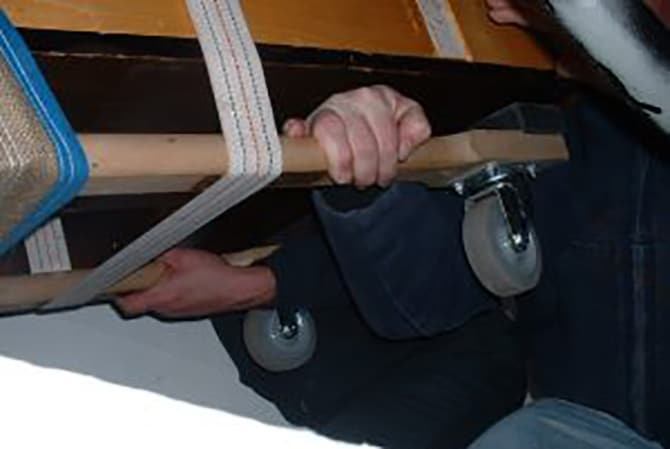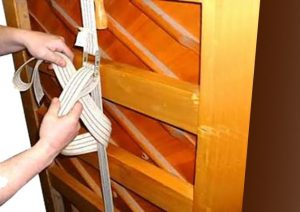Now for the most difficult and dangerous part of piano moving –
actually carrying it up or down more than 4 consecutive low stairs.
Everything that has been taught to you so far is very easy stuff compared to what’s coming now. From here on, there is so much potential danger that this is the aspect of piano moving that causes us to strongly advise you not to do it yourself. So please be very attentive to every picture and everything that we say.
When ascending/descending stairs, there are a couple of preparatory considerations that must be properly addressed before attempting to carry the piano over even one step. It is extremely dangerous to the people moving the piano and to the piano itself if this prep work is not done absolutely correctly and completely before any effort is expended to carry the piano up/down stairs. Even with just 5 or 6 simple straight stairs to traverse, this prep work must be very carefully accomplished.
How to Prepare an Upright Piano to Be Carried
First of all, the piano must be precisely centered and balanced on the dolly on its side (as is pictured below). To learn how to do this see mounting an upright piano onto its side on a dolly.

Then the piano should be strapped down tightly to the dolly with a piano strap as shown in the 2 pictures below. To learn how to do this see properly how to strap an upright piano to a dolly.
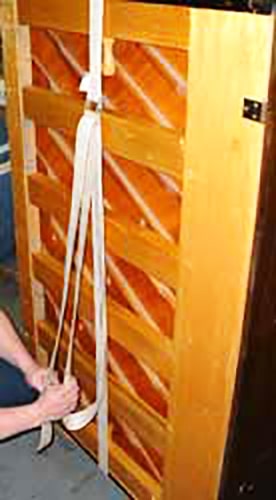

Finally, the top side should be well-padded and taped as shown in the picture below.
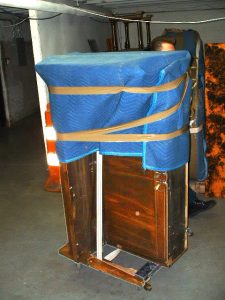
With the piano strapped to the 4 wheel piano dolly and with its top side well-padded as shown in the picture above, the piano is now ready to be carried.
How to Carry an Upright Piano
First, double check that the piano is very securely strapped to the dolly with the locking piano belt so that the piano and the dolly stay firmly together throughout the carry. The piano is lashed to the dolly which, when going up/down stairs, in effect welded to it, becomes the bottom of the piano.
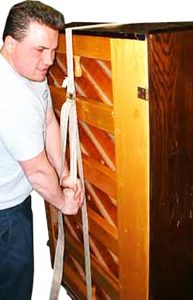
As you can easily imagine, if the dolly comes loose under the piano as it is being carried up/down the stairs, then the very least of the many bad things that can happen is some damage to the piano! Much worse has been known to occur so really put the pressure on when tightening the strap! It’s not going to harm the piano to belt it down tightly.
Next, the
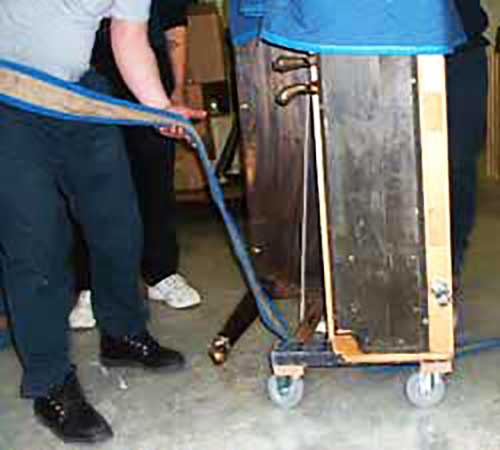
These humpstraps are quite strong so don’t worry about them breaking as you are lifting the piano. They can easily carry in excess of 1000 lbs.
As you approach the steps to be traversed (with the piano on its side on a piano dolly), the bottom of the piano should be facing the steps and the keyboard side of the piano should be facing the wall and the back of the piano should be facing the railing (as is pictured below).
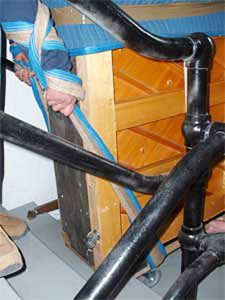
This way, if the piano gets severely out of balance, the piano’s flat
If the starting position of the piano is reversed (keyboard to
As we have already discussed, pianos are very heavy! So the humpstrap is employed to extend the top man’s reach down and under the piano so that he has to do as little back bending as possible with the piano’s heavy weight in order to lift it.
The top man uses this strap, wrapped around their wrists and forearms, to extend their reach so that they can most easily lift up their end of the piano.
They can also go up or down without any help on their end, primarily using their strong leg and abdominal muscles powering through their extended arms and the strap (wrapped around the bottom of the piano). They direct the bottom guys and compensates to keep the piano in balance using the strap while the bottom 2 people carry most of the piano’s weight on their shoulders.
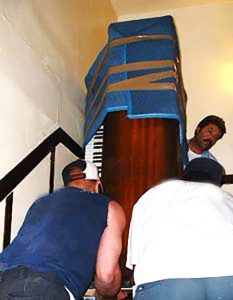
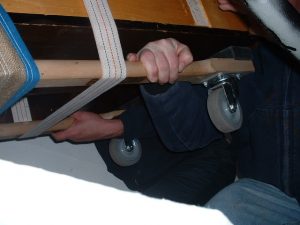
The bottom men lift their share of the piano’s weight with their arms for a short carry but they get their shoulders under the piano for a longer carry.
The person on the keyboard side of the bottom of the piano is supposed to do some of the
So they have to be careful to only lift when they need to in order to keep the piano in balance. Their position is very key to avoiding injury so they have to take great care
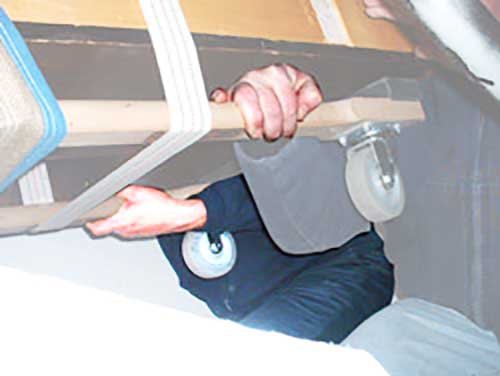
The person on the other side, handling the bottom of the piano, is on the heavy side of the piano and their job is to brace themselves very low and lift most of the weight of the piano on their shoulder primarily using leg and stomach muscle power. They also have to be careful not to over-pick or to allow the person on the keyboard side to under-pick.
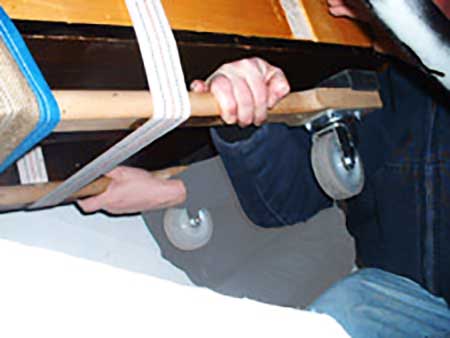
The fourth person, the bottom safety person (if there is one), should keep looking up at the top of the piano to see that it stays balanced straight up. They give a hand when they can to keep the piano in balance and stay close to the action, always ready at a moment’s notice to jump in and help the bottom two men or the top man, if needed.
The fourth person cannot fit anywhere on the steps so normally they would stay right behind the bottom 2 people as a safety in case someone gets into trouble. They can also move alongside the piano and reach up to help balance it as it progresses up/down the stairs.
The person on the keyboard side of the bottom should also be trying to look up as the piano moves in order to also keep the balance. Remember, as the piano shifts its balance even just a few inches, the person on the top and the person on the bottom can easily wrench their backs.
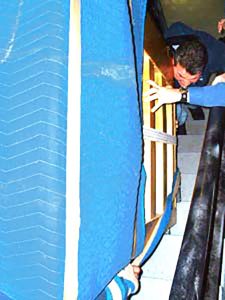
So, typically with piano movers, a bit of shouting at each other occurs trying to communicate while each person is extremely burdened carrying and trying to balance their own share of the load. In this manner, as a well-coordinated team, the 3 or 4 movers split the load and move the monster, one step or two steps at a time, touching down on the dolly on the steps to rest and rebalance until the piano is set down on a landing!
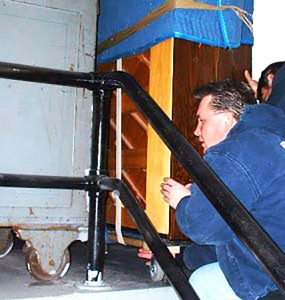
Remember that carrying an upright piano can be extremely dangerous for people with little or no piano moving experience. Do what’s best for you and your expensive musical instrument and hire professional piano movers.
